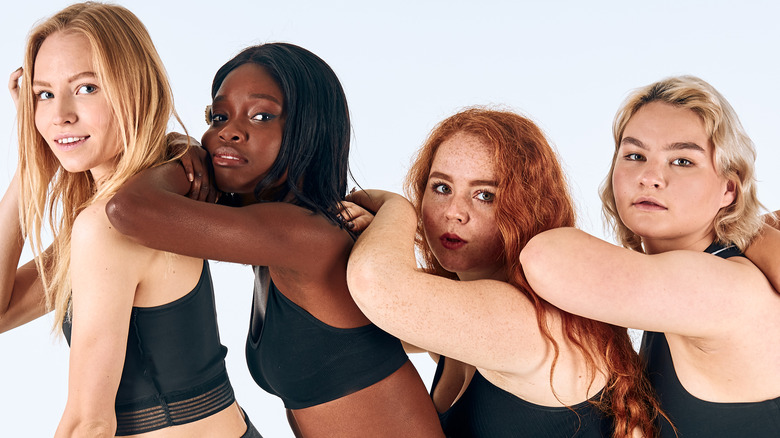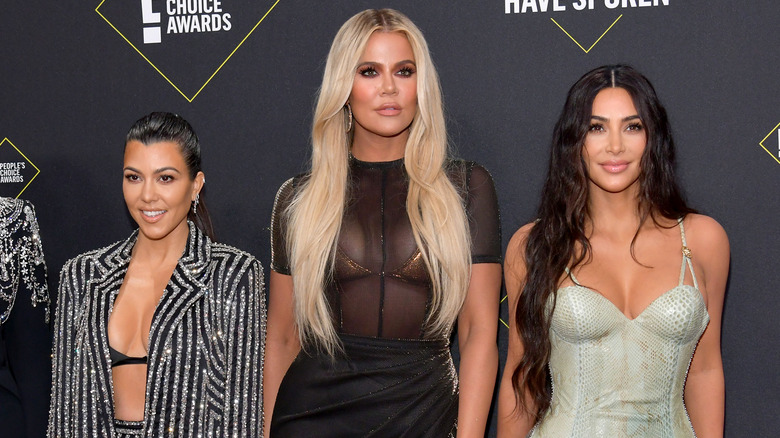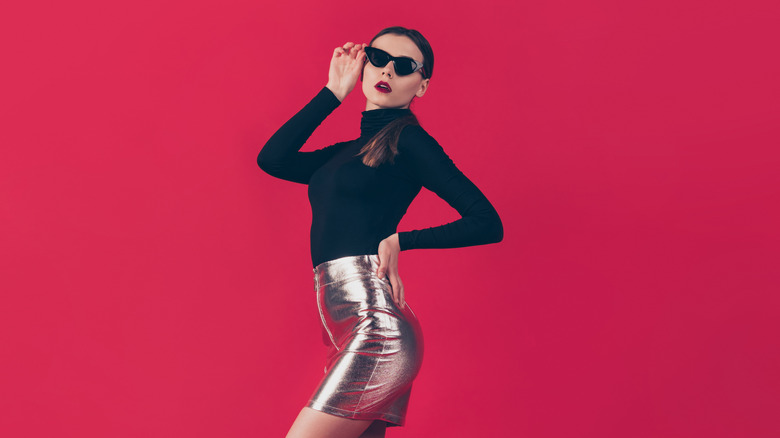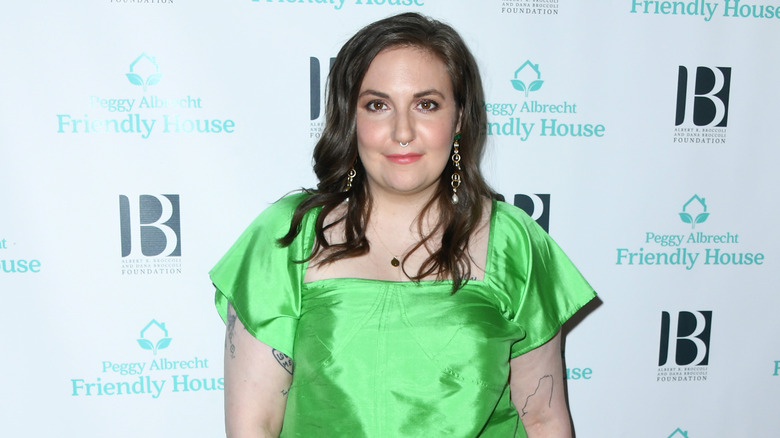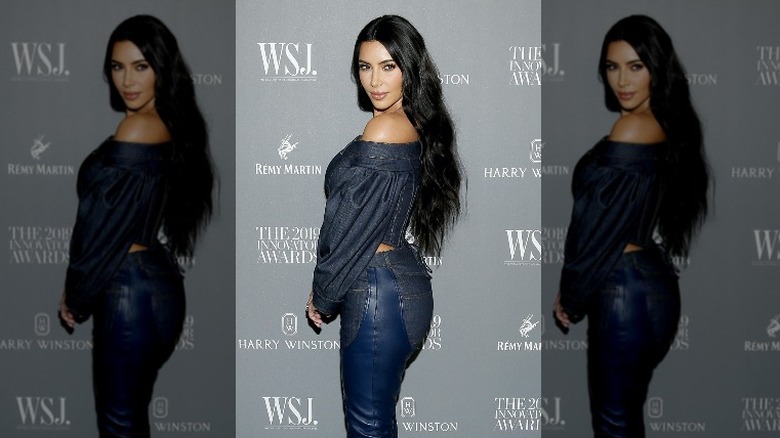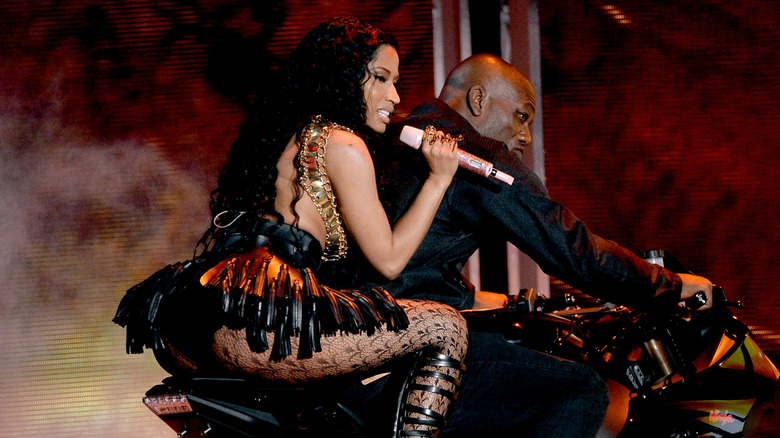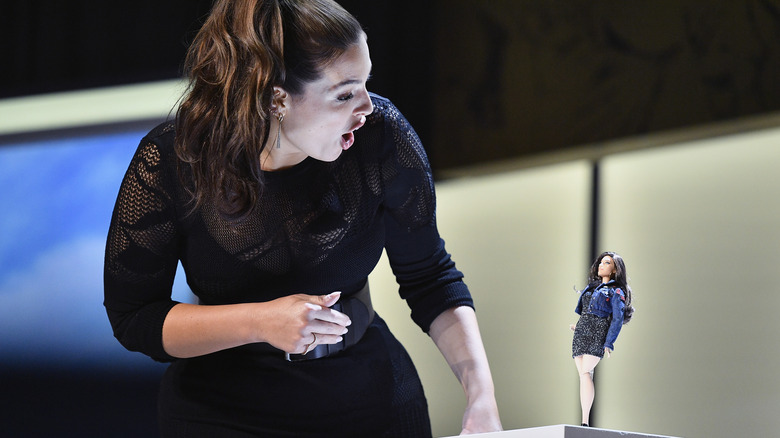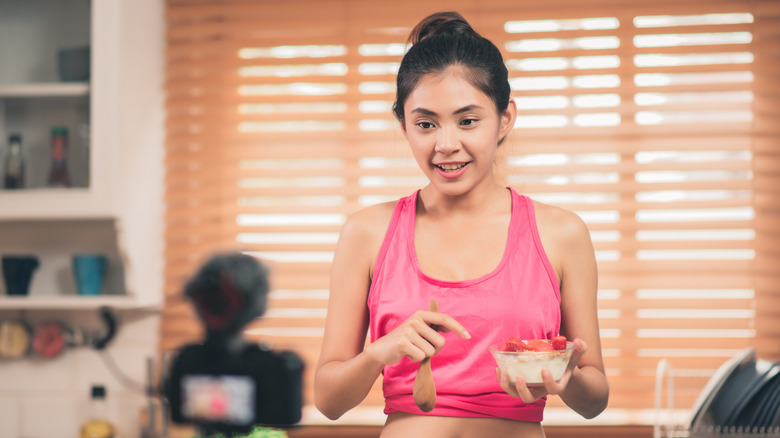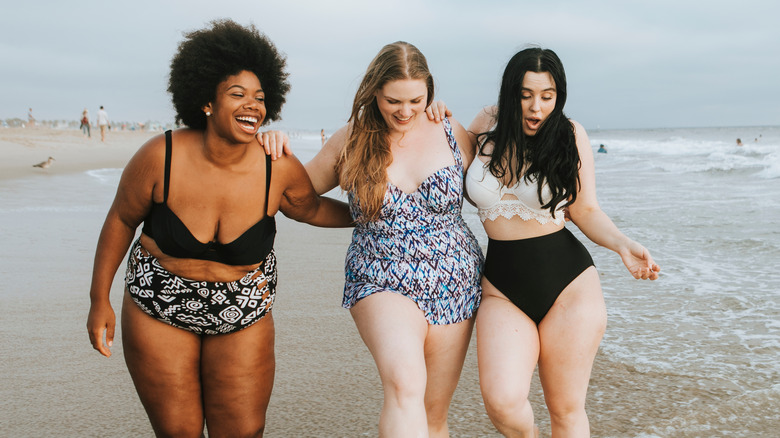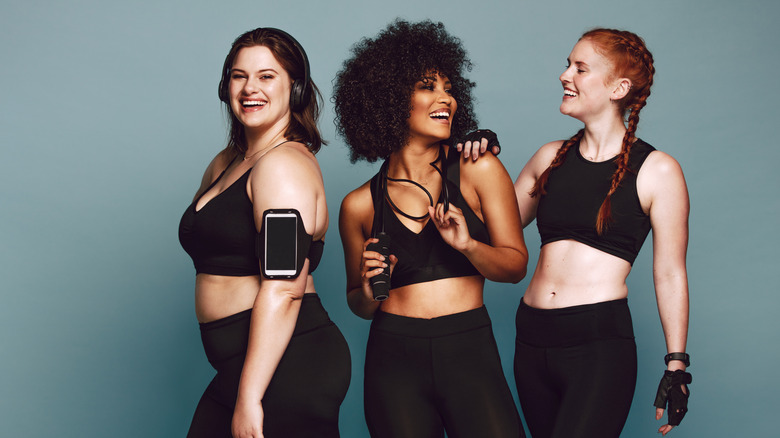How Women's Perfect Body Types Changed Throughout The Past Decade
Throughout the years, women's perfect body types have evolved, shifting as the societal ideas of what defines perfect have changed. As far as women's bodies are concerned, there hasn't really ever been a time when society didn't tell women what they were supposed to look like. As far back as the paleolithic era, there has been an ideal body type for women, and that hasn't really changed much throughout the course of history.
Specifically, over the course of the past ten years, the ideal female body type shifted several times. From what the media and women's' magazines declared to be beautiful to which images of celebrities who are at the top of their game circulated and so much more, a number of things influence the idea of how women are "supposed" to look like in today's day and age. While there is no such thing as the perfect female body, the idea of the perfect female body has definitely changed a lot.
After Keeping Up with the Kardashians, curves became an essential for the perfect body type
After the hit E! reality series Keeping Up with the Kardashians premiered in 2007, the show's popularity soon soared. In fact, when the show's fifth season premiered in 2010, the episode was "the network's 2nd most-watched telecast ever (only behind last season's Kardashians finale)," according to Entertainment Weekly. Basically, by 2010, Keeping Up with the Kardashians, even with all of the show's most uncomfortable moments, had taken over, and so had all of the stars' curves.
Looking back at the Season 5 promo for Keeping Up with the Kardashians, it's clear that the Kardashians had a very specific body type and look. Because the show was so popular, it's no wonder that the Kardashian body was also so prominent at the start of the decade (via The Guardian). While all three Kardashian sisters — Kim, Kourtney, and Khloé — are certainly thin, they also all have a lot of curves.
So, at the start of the decade, being thin was in, but so was having hips and a behind. Basically, being a woman just got harder because of this idea of the perfect body type.
In 2011, magazines continued to claim the perfect body type was thin
While the Kardashian family might have helped to make the ideal woman's body curvier, magazines and other forms of media continued to promote a thin body type in 2011. No matter where you looked, it seemed as though the perfect body type was still to just be perfectly skinny. Though society had definitely started to come to the general understanding that the models in magazines had bodies that were almost impossible to get, not much changed. In fact, a 2011 study found that the images in magazines of women's' bodies seriously messed with real women's minds.
According to the study, published in Science Daily, when women looked at magazines "with thin, idealized body types" for five days, "something surprising happened: the readers' own body satisfaction improved." But that doesn't mean those women were content with how they looked. Per the study, "those women whose body satisfaction improved the most also were more likely to report that they engaged in dieting behaviors such as skipping meals or cutting carbohydrates during the course of the study."
In 2011, the media's pressure to look thin was so strong that there was actual scientific proof that it caused women to diet.
In 2012, the idea of the perfect body type was influenced by "real" bodies
When 2012 came around, not much had changed in terms of what the perfect body type was for women. In fact, according to a 2011 article in the Daily Mail, a "survey of female students aged 18 to 65 at British universities found that almost one in three would be willing to die younger in exchange for the 'ideal' figure of the likes of model Kelly Brook or actress Scarlett Johansson." The struggle to attain the perfect body wasn't going anywhere. However, the premiere of the television show Girls in 2012 started to shift the body types presented by the media.
In fact, on Girls, actress Lena Dunham, who's had a stunning transformation over the years, had so many nude scenes that it started to become normal for her character, as noted by Indie Wire. Because Dunham's body isn't like the rail-thin models people often see in fashion magazines and in the Victoria's Secret Fashion Show, the show really started to change the idea of what makes the perfect body. In short, the show and Dunham's nude scenes were freeing for women everywhere, who finally saw their body type represented on the small screen.
Kim Kardashian's booty took over in 2013, and perfect body type ideas changed
In 2013, Kim Kardashian had a big year. That year alone, Kardashian welcomed her first child, North West; attended the Met Gala for the first time; and got engaged to the father of her daughter, Kanye West. So it's no accident that she also started trending worldwide after posting a photo of herself that could really only be described as a butt selfie, as reported by E! News.
In October 2013, Kardashian shared a selfie of herself wearing a tight one-piece swimsuit that perfectly showed off her, um, assets, including her behind and a good amount of side boob. The photo has racked up over 1 million likes since Kardashian posted it with the simple caption, "#NoFilter," and the post really started to hone in on the trend of having a big booty as part of the perfect body type. As Kardashian had given birth to her daughter earlier that year, her butt selfie soon became body goals for many women.
In 2014, the perfect body type was all about the behind
The year 2014 saw the rise of something not-so-new in the world of the perfect female body: the prominence of the butt. Though having a big booty has gone in and out of style when it comes to women's perfect body types over the years, 2014 brought it all the way back. That year, Nicki Minaj, a star many celebs can't stand, released the music video for her hit single "Anaconda," and, well, it was full of butts, butts, and more butts. The music video has since racked up over 900 million views on YouTube, making it a huge pop culture moment from the past decade. But that's not all, 2014 was also the year when Kim Kardashian broke the internet with her revealing photos in Paper magazine, including one interesting shot of her balancing a champagne glass on her rear end.
The butt became so popular in 2014 that The New York Times ran an article on the matter, and the paper interviewed an Instagram influencer who had acquired followers due, in large part, to her posterior. "When I was growing up, everyone wanted to look like skinny, bony girls," Jen Selter told the publication. "Over time, butts have become a thing." And boy, was she right. Butts ruled all in 2014, and no matter who you were, you wanted a big one.
Body-positivity started to take over
In the mid-2010s, a movement all about accepting one's body and remaining positive about it began to spread like wildfire. According to Kaila Prins, a body positive wellness coach and burlesque teacher, body positivity is "the idea that you can live comfortably in your body, as it is right now, or work on treating it right through nourishment and joyful movement and self care without punishing yourself for looking the way you do," as she told Psychology Today. Body positivity began to trend, and people clung to the idea that women's' bodies should be celebrated, no matter what they looked like.
In a move perfectly aligned with the body-positivity movement, the female-oriented publication Women's Health announced it would no longer print the phrases "bikini body" or "drop two sizes" on its cover. However, as body positivity began to spread, Prins told Psychology Today that body positivity wasn't about not aiming to be healthy. "A common misconception is that body positivity is about 'letting yourself go,' or sitting on the couch eating junk food all day and not caring," she said. On the contrary, the body positivity movement was merely focused on not conforming to societal ideals of beauty.
2016 introduced a new Barbie and petite was in as a perfect body type
After the body positivity movement started to take the world by storm, more and more companies and corporations started to embrace it. The Miss Teen USA pageant stopped having a swimsuit portion of the competition, stating in a letter that "this decision reflects an important cultural shift we're all celebrating that empowers women who lead active, purposeful lives and encourage those in their communities to do the same," as reported by HuffPost. Additionally, Sports Illustrated featured plus-size model Ashley Graham on the cover of the 2016 Swimsuit Edition.
But one of the biggest changes for women's perfect body types came about when Barbie introduced three new body types to its dolls (via CNN): tall, curvy, and petite. With the launch of the new Barbies, the ideal body type of petite was largely introduced to women. While curves, in particular, had been in style for a while, the new Barbie doll showed women that being shorter and smaller was still beautiful, and petite women everywhere celebrated.
In 2017, a healthy body was a perfect body type
Women's perfect body types really changed in 2017. As the body positivity movement continued to grow and expand, the fashion industry started to take part in the movement. While many models are still super thin and have largely unattainable body types, in 2017, the Council of Fashion Designers of America reminded designers ahead of New York Fashion Week that health was of the utmost concern when it came to their models.
According to Women's Wear Daily, Diane von Furstenberg and Steven Kolb sent an email to designers that stated the CFDA "will continue to grow its health and wellness initiatives through the CFDA Foundation + Equinox Coalition for Health as Beauty." Additionally, the email stated that "eating disorders are emotional disorders that have psychological, behavioral, social and physical manifestations, of which body weight is only one," once again maintaining that the health of the models walking the runway was to take precedence. In 2017, a healthy body was a perfect body.
"Fat" became less of an insult in 2017, and the idea of the perfect body type shifted again
Continuing with the body positivity movement, many body positive activists felt that the word "fat" needed to be redefined. In fact, author Roxane Gay spoke out quite a lot about weight in 2017, and she called out people who saw the word "fat" as an insult.
"A lot of times people see fatness as sickness and that's not necessarily the case, just like thinness is not necessarily equated with health," she said in an interview with Harper's Bazaar. "I wish people had more empathy and consideration for different types of bodies and didn't immediately start to approach fat bodies as, 'Oh, this is a problem and this problem needs to be solved.'"
Indeed, the ideal body type for women shifted once again in 2017, as more and more people started to accept that the word "fat" wasn't a bad thing and to be fat wasn't a bad thing, either. Being overweight started to become more and more acceptable, and, in 2017, it defined just one of women's perfect body types.
2018 saw the transition to body-neutrality, meaning the perfect body type didn't exist
Though body positivity was once super popular, in 2018, many people began to take notice of the movement's flaws. In fact, one former follower of the movement, Stephanie Yeboah, a plus-sized blogger and writer, spoke to The Guardian about how body positivity didn't work for her anymore. "It has become a buzzword, it has alienated the very people who created it," she told the publication. "Now, in order to be body positive, you have to be acceptably fat — size 16 and under, or white or very pretty. It's not a movement that I feel represents me any more." In place of body positivity came body neutrality.
Body neutrality allowed women to make peace with their bodies, without feeling like they had to change anything about it. That being said, in 2018, the perfect body type for women didn't really exist. Instead, feelings towards the ideal body were merely... neutral.
In 2019, the Instagram standard of beauty took over when it came to women's perfect body types
In 2019, social media and Instagram, in particular, had really started to take over. Really, Instagram is an entire form of media in and of itself. There are ads, there are celebrities, there is content, and there are influencers. So very many influencers. Because of that, Instagram has definitely contributed to the societal standards of beauty and the idea of women's perfect body types — so much so that one blogger went on a mission to uncover just what the Instagram version of a perfect woman looked like.
Cassey Ho of Blogilates went on a mission to decode the Instagram standard of beauty, and, boy, did she uncover a lot. By looking at the top 100 female Instagram users, Ho was able to see which attributes were the most popular across the platform. According to Ho's research, the ideal woman on Instagram "has a flat stomach, but she is not muscular," she "does not have a flat chest" as "89% of the top 100 ... have boobs that are a B cup or higher," and she "has an hourglass figure." Those are definitely some high standards, and, to prove her point, Ho actually transformed herself into the perfect Instagram woman for her followers, and the results were creepy, to say the least.
In 2019, the perfect body type was inclusive
Really, there is no such thing as the perfect body type. Every woman has a beautiful body, and every body is a bikini body, no matter what. However, ideals still exist. And, as time goes on, certain body types definitely become more and more popular, but that doesn't mean one is better than the other. However, it's almost ingrained into peoples' minds to be curious about what shapes and sizes are deemed desirable by celebs and fashion magazines.
Museum curator Emma McClendon, who organized an exhibit on fashion and women's bodies, told CNN, "Whether it's contemporary or 19th century, they want to know what size it is or what size it would correlate to, or what measurement it is." She continued, "We as a culture, as a society, are obsessed with size. It's become connected to our identity as people." However, it's so incredibly important to remember that your weight, size, or body type does not define you, and the perfect body doesn't exist. As time goes on, the ideal body type will continue to change because there isn't an actual ideal body out there. As society changes, so does the idea of what a woman's body is supposed to look like.
